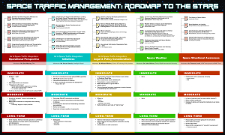Presentation Type
Paper (supporting PowerPoints may be added as Additional Files)
Location
Henderson Welcome Center
Start Date
16-1-2018 11:00 AM
End Date
16-1-2018 12:30 PM
Abstract
In this paper SpaceShipTwo (SS2) nominal flights were conducted by various pilots and compared with other nominal flights as part of the Polar Suborbital Science in the Upper Mesosphere (PoSSUM) program. The first set of flights was performed by student pilots in the left seat of the Suborbital Space Flight Simulator (SSFS) with the intent to fly a nominal flight. The second set of nominal flights was flown by the same student pilots but instructed by Scientist-Astronaut Candidates (SAC). The SAC, who occupied the right seat of the SSFS, wore an intravehicular activity (IVA) pressurized suit designed by Final Frontiers Design. Since the SAC’s goal was operation of the scientific instrumentation inside the cockpit during the suborbital flight, the SAC communicated specific instructions to the pilot to adjust the trajectory to meet the science requirements when the vehicle transited the mesosphere. Mesospheric measurements were obtained during the ascent and descent of the suborbital trajectory at an altitude of approximately 273,000 feet. During this 20 to 30 second phase of the flight, the SAC instructed the pilot to maneuver SS2 along the trajectory required to optimize data collection measurements. These attitude maneuvers performed by the pilot using the reaction control system aboard the vehicle can significantly affect the flight corridor of the vehicle. These operations will help characterize operations above 60,000 feet in analogue suborbital missions and can alleviate communications between the ATC controllers and the STM controllers and improve the Concept of Operations (CONOPs) as part of the FAA initiative.
Nominal SpaceShipTwo Flights conducted by Scientist-Astronaut Candidates in a Suborbital Space Flight Simulator
Henderson Welcome Center
In this paper SpaceShipTwo (SS2) nominal flights were conducted by various pilots and compared with other nominal flights as part of the Polar Suborbital Science in the Upper Mesosphere (PoSSUM) program. The first set of flights was performed by student pilots in the left seat of the Suborbital Space Flight Simulator (SSFS) with the intent to fly a nominal flight. The second set of nominal flights was flown by the same student pilots but instructed by Scientist-Astronaut Candidates (SAC). The SAC, who occupied the right seat of the SSFS, wore an intravehicular activity (IVA) pressurized suit designed by Final Frontiers Design. Since the SAC’s goal was operation of the scientific instrumentation inside the cockpit during the suborbital flight, the SAC communicated specific instructions to the pilot to adjust the trajectory to meet the science requirements when the vehicle transited the mesosphere. Mesospheric measurements were obtained during the ascent and descent of the suborbital trajectory at an altitude of approximately 273,000 feet. During this 20 to 30 second phase of the flight, the SAC instructed the pilot to maneuver SS2 along the trajectory required to optimize data collection measurements. These attitude maneuvers performed by the pilot using the reaction control system aboard the vehicle can significantly affect the flight corridor of the vehicle. These operations will help characterize operations above 60,000 feet in analogue suborbital missions and can alleviate communications between the ATC controllers and the STM controllers and improve the Concept of Operations (CONOPs) as part of the FAA initiative.


Comments
Full-text papers/presentations will be available post-conference
Visit the NAS Integration research panel